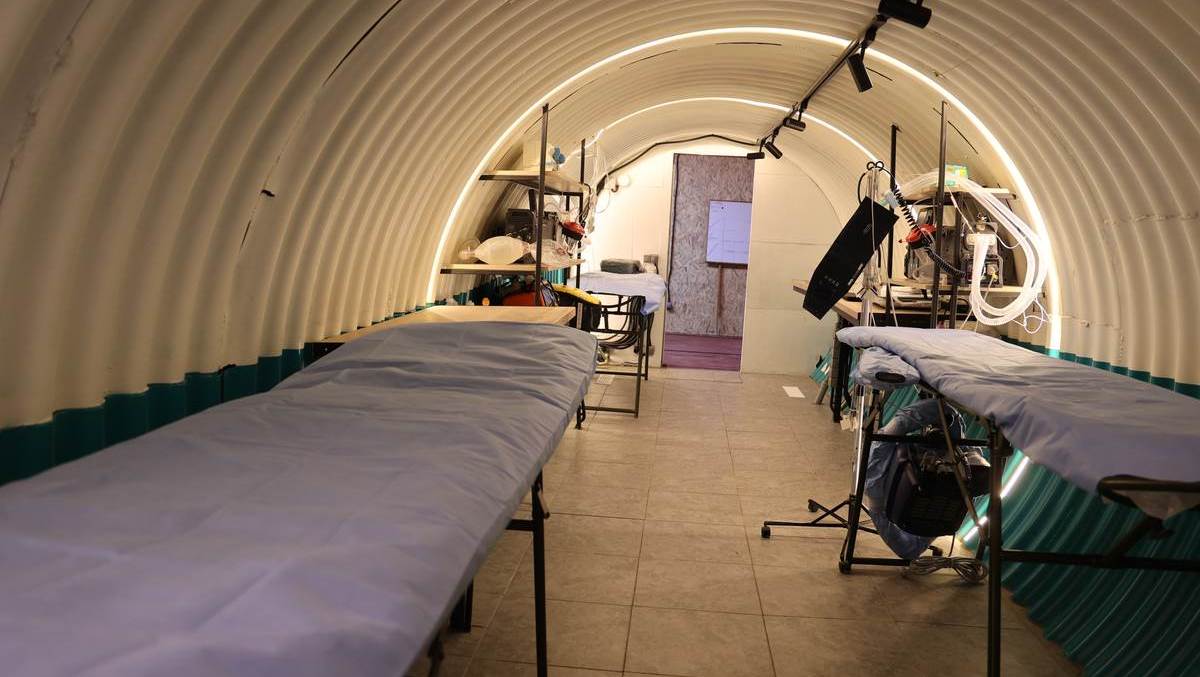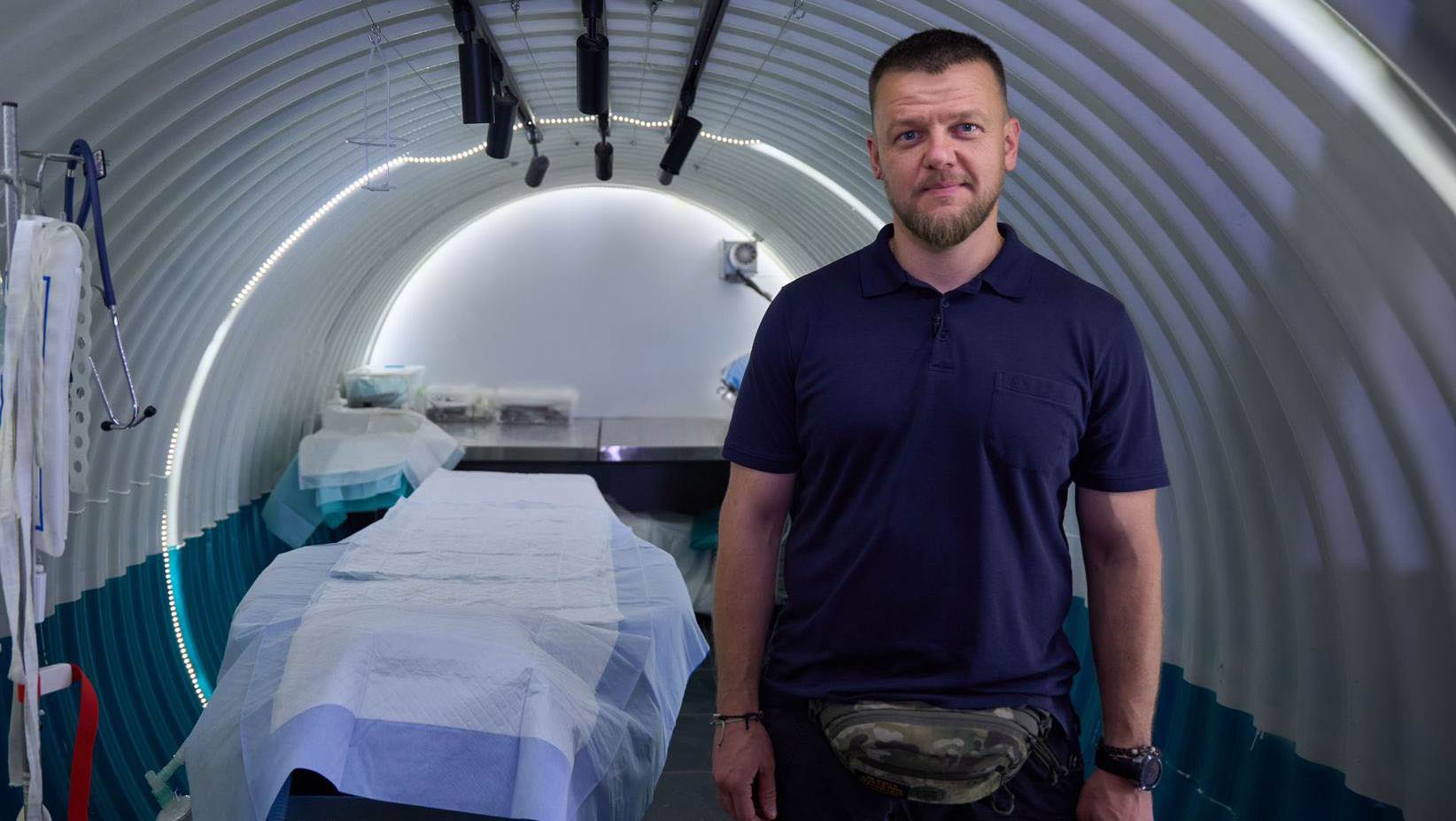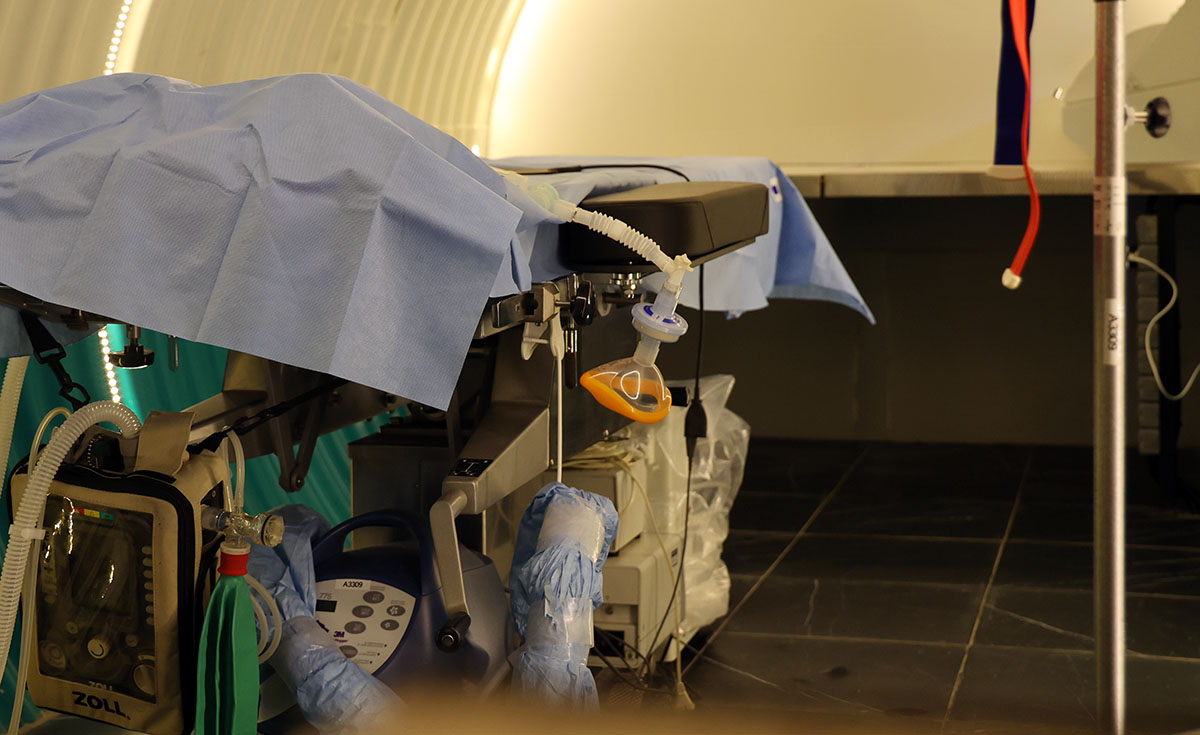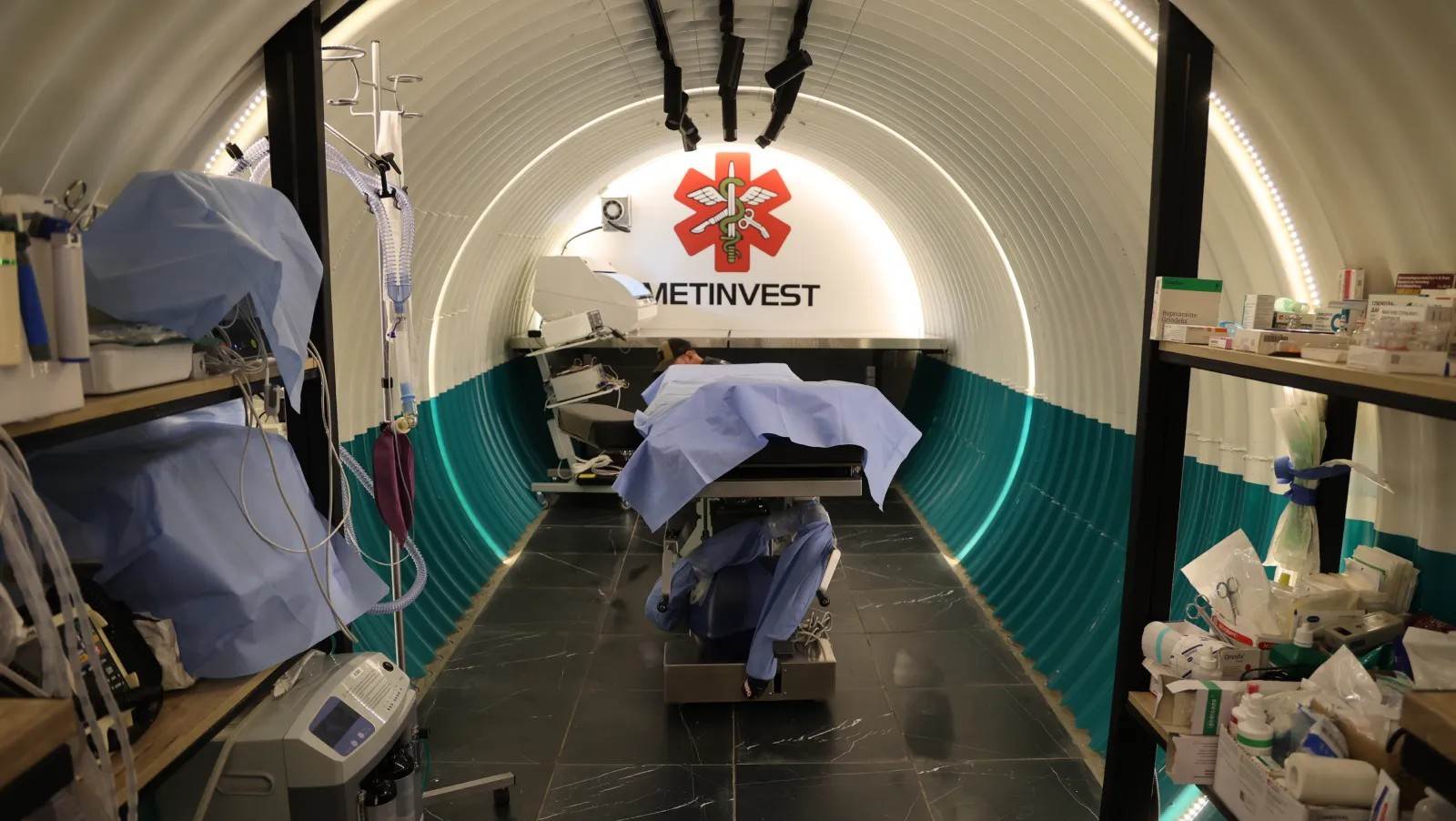For Lieutenant Colonel Roman Kuziv, the decision to hide the field hospital six metres underground was driven by the numbers: the Russians shelled another medical point in the same area 16 times.
As his car descends the ramp leading underground, he said: “We have accepted that Russia constantly ignores the Geneva Convention. The protection that medical facilities once had is now a thing of the past.”
A modern medical complex covering 400 square metres has been created for patients there: six capsules made of thick prefabricated metal that meet the highest requirements for such facilities under military standards.

Kuziv explained, referring to the stated classification: “This is a level four hospital.” He added, showing us the different floors of the complex: “There are two operating rooms and an intensive care unit. We have a water well and two of our own generator systems.”
The commander of the “East” medical forces group of Ukraine’s armed forces recalled: “Some told me that I was crazy, but hospitals are obvious targets. On 1 February, I gave the order to evacuate the hospital in Pokrovsk at 8 p.m. I got dozens of staff out. Two hours later, the Russians dropped seven 500-kilogramme KAB bombs on it.”
The steel capsules are manufactured at Metinvest’s plants, which have reconfigured production to help the Ukrainian army. Oleksandr Myronenko, Metinvest’s chief operating officer, clarified: “The first underground hospital began operating last year, and another is under construction. Initially, we wanted to make compact modules that could be joined with bolts. But the military said there was no time for assembly. So we increased the size of the modules.”

During certification tests, engineers assessed the strength of the structures using live ammunition: they fired 120-mm shells at them, struck them with mortars and dropped eight-kilogramme TNT bombs from drones.
Kuziv said: “Unfortunately, Ukraine is now a testing ground for future military strategies.”
The relocation of medical facilities underground is evidence of a regression in compliance with the laws of war adopted after the Second World War, when underground hospitals were almost the norm due to widespread, indiscriminate attacks from all sides.
Although medical facilities continued to be targeted during armed conflicts, including in Korea and Vietnam, the 1949 Geneva Conventions and the 1977 Additional Protocol established the legal basis for their protection as structures intended to assist the victims of conflicts. However, due to systematic violations of humanitarian law, tent hospitals, once popularised by the television series M*A*S*H, have virtually disappeared. They have become too vulnerable to attacks.
A report by Ukraine’s Ministry of Health in early May stated that since the start of the full-scale invasion in February 2022, Russia has destroyed more than 300 medical facilities and damaged a further 2,000.
On 8 July last year, a Russian missile partly destroyed Okhmatdyt, the country’s largest children’s hospital located in Kyiv, killing two adults. The Ukrainian military reported that Moscow had used a cruise missile known for its precision in destroying targets.
Pavlo Kovtonyuk, the author of a report on repeated armed attacks by Russian troops on medical facilities, said that Moscow “has already employed such deadly tactics in Chechnya and Syria without taking responsibility. If Russia escapes punishment, the destruction of hospitals will become a weapon of war. Evil that goes unpunished only multiplies.” This practice is not limited to the Russian armed forces. In the Gaza Strip, Israeli attacks on medical facilities have continued since October 2023.
According to the organisation Perspectiva Sobre la Inseguridad (Prospect on Insecurity), as of 28 April, medical facilities in the Gaza Strip had been attacked 359 times. Israelis have killed 645 medical workers and arrested a further 354.
The World Health Organization reported that at least 94% of Gaza’s hospitals have been damaged or destroyed.
Gaza ranks first in this grim rating, which also reflects a tactic that is being increasingly integrated into the military strategies of many countries.
In 2016, the international organisation Doctors Without Borders launched a campaign warning about the rise in such attacks, considered war crimes, under the slogan “Not a target”. Two years later, the reputable journal The Lancet raised the question in an editorial: “Are the humanitarian principles defined today still relevant to an ever-changing military strategy?”
Located 12 kilometres from the front line, the hospital designed by Kuziv was visited by Ukrainian President Volodymyr Zelensky in December last year, who praised the facility’s innovation. This pioneering project paves the way for the development of a comprehensive policy on the construction of underground medical facilities supported by local authorities. For example, Kyiv plans to build a large 12,000-squaremetre hospital in the Kharkiv region with capacity for 2,000 people.

In Kherson, in the south of the country, local authorities have already opened underground units in three medical facilities of this kind. One was converted into a maternity ward in January this year.
A 58-year-old Volodymyr Hobachevskyi, one of the facility’s managers, explained: “The building suffered two direct hits this year. Two more missiles struck very close by.”
Four women remain in the hospital: some awaiting delivery, others recovering after giving birth. One is 36-year-old Nataliya Mokrakova, who gave birth to her son Mykyta a few hours ago. She does not consider giving birth under shelling to be anything unusual. Nataliya stated: “Women have always given birth during wars, even in the Second World War.”
